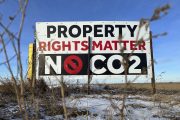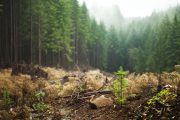
In science, the worst type of evidence is anecdotal. Such evidence is based on casual observations and not tested through scientific rigor. In the climate-change debate — and despite what carbon-credit salesman Al Gore tells you, there still is a debate — such evidence is sniffed at haughtily and the one who presented it is told that he or she does not understand the difference between climate and weather.
But since climate alarmists use such evidence all the time, oftentimes in the most absurd ways imaginable, as “proof” that man-made global warming is here and affecting us now — surely what’s good for the goose is good for the gander.
Which brings us to the recent summer solstice snowstorm in the Colorado Rockies. On June 21, a freak snowstorm dropped up to 20 inches of snow on parts of Colorado, adding to an already substantial snow season, which since January has seen snow totals in Colorado at more than 750 percent above normal. The recent snow has ballooned that number to over 4,000 percent above normal. A large part of that percentage is because snow is normally completely absent by June, and this year’s abnormally cold temperatures have helped preserve vast amounts of snow that fell earlier in the year.
It’s good news for ski resorts such as Arapahoe Basin, which plans to reopen this coming weekend and may possibly be open for Fourth of July skiing as well.
In the Steamboat area, approximately 150 miles northwest of Denver, 20 inches of snow fell. According to CNN, it is the latest snowfall reported in the area since June 17, 1928. The area typically sees the last snow of the season by May 6.
The Breckenridge, Vail, and Beaver Creek ski areas also reported measurable snowfall during last weekend’s storm.
The large snowfalls of 2019 are good news for Colorado as a whole, since the snowy season has eliminated drought conditions, which had existed in much of the state for nearly two years. In addition, the extra moisture should make the wildfire season in the state less hazardous.
High snowfall totals are not unique to Colorado, either. In California, the snowpack is in the best shape it’s been in for decades. In early May, the snowpack in the Golden State was 44 percent above average overall, with Phillips Station in the Sierra Nevada reporting 88 percent above normal.
In Montana’s Glacier National Park, signs and government literature telling visitors that the glaciers they were witnessing would be gone by the year 2020 were quietly removed from the park. Both the Grinnell and the Jackson glaciers appear to have grown by approximately 25 percent since 2010. As this video shows, as late as last year, a display at the park was still predicting that the glaciers would be gone by next year.
These are but a few examples of anecdotal evidence showing that anthropogenic global warming might not be quite the menace that climate alarmists and the mainstream media want you to believe. There are hundreds more examples even though Google and the other main search engines try to hide them.
So, when climate alarmists such as Alexandria Ocasio Cortez (D-N.Y.) point to events such as the flooding along the Mississippi River as “evidence” of global warming, just remember that there are also tons of the same type of “evidence” on the other side of the argument.
Image: Screenshot of video from KCNCTV in Colorado





